This post may contain affiliate links. Please read our disclosure policy.
This Homemade Marinara Sauce bursts with garden-fresh tomato and garlic flavor and is so easy to make. Naturally vegan, gluten-free, and freezer-friendly, make this delicious marinara sauce recipe once, and you’ll never want to buy pre-made pasta sauce again.
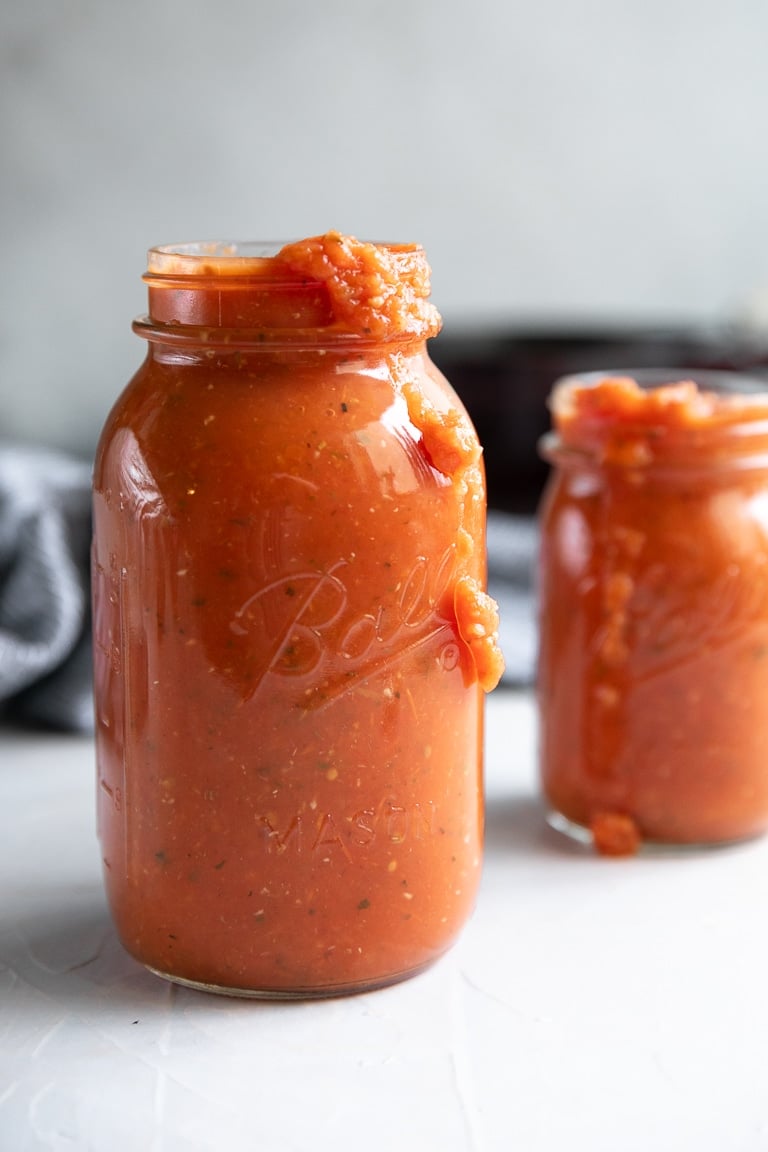
The Best Homemade Marinara Sauce Recipe
A handful of simple ingredients and a little over 30 minutes is all that’s needed to make your own delicious homemade marinara sauce. Fresh and minimally processed, this marinara sauce is super healthy as it contains no preservatives or unnecessary additives.
My favorite way to use up sun-ripened summer tomatoes, you can also make this easy recipe with canned tomatoes (or a mixture of each).
Perfect as a pizza sauce or mixed with juicy meatballs, it’s the perfect base for all of your favorite Italian recipes including lasagna, chicken parmesan, stuffed shells, and ravioli.
What is Marinara Sauce?
Marinara sauce is a tomato sauce. Though there are many varieties, the most basic is typically found to contain olive oil, tomatoes, garlic, fresh herbs like oregano and fresh basil, and onions. Other variations may include wine, capers, olives, and other spices or herbs.
Marinara sauce is typically vegetarian and gluten-free unless it includes anchovies – a popular addition often found in Italy.
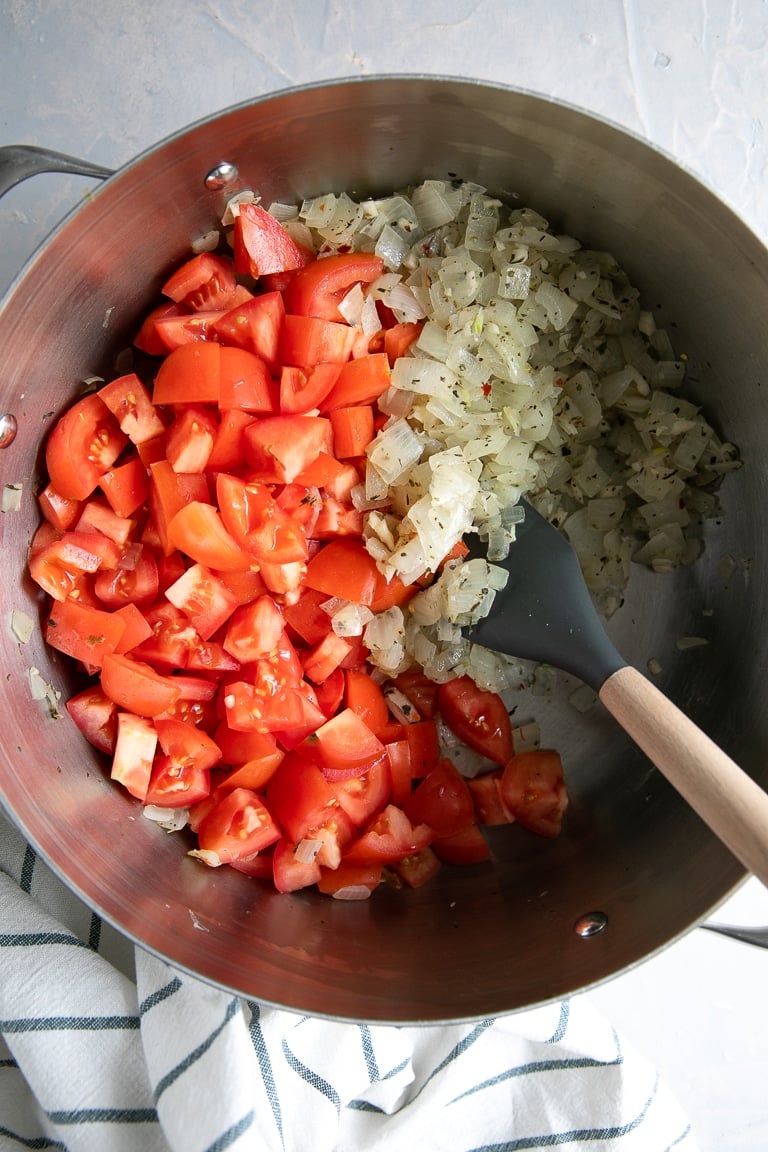
Difference Between Marinara Sauce and Spaghetti Sauce
Marinara Sauce: Quick-cooking and seasoned only with garlic, crushed red pepper (optional), and basil. Best when made with whole tomatoes, such as whole San Marzano, plum, or Roma tomatoes, that are coarsely crushed (or chopped), simmered, and processed into a smooth sauce or left chunky.
Spaghetti Sauce (aka Tomato Sauce): Made using pureed tomatoes and a combination of onion, carrot, celery, and bay leaf, Spaghetti Sauce takes longer to prepare as it requires a longer period of time to simmer and thicken when compared to Marinara Sauce. Sometimes, Spaghetti Sauce will include meat such as beef or pork for added flavor.
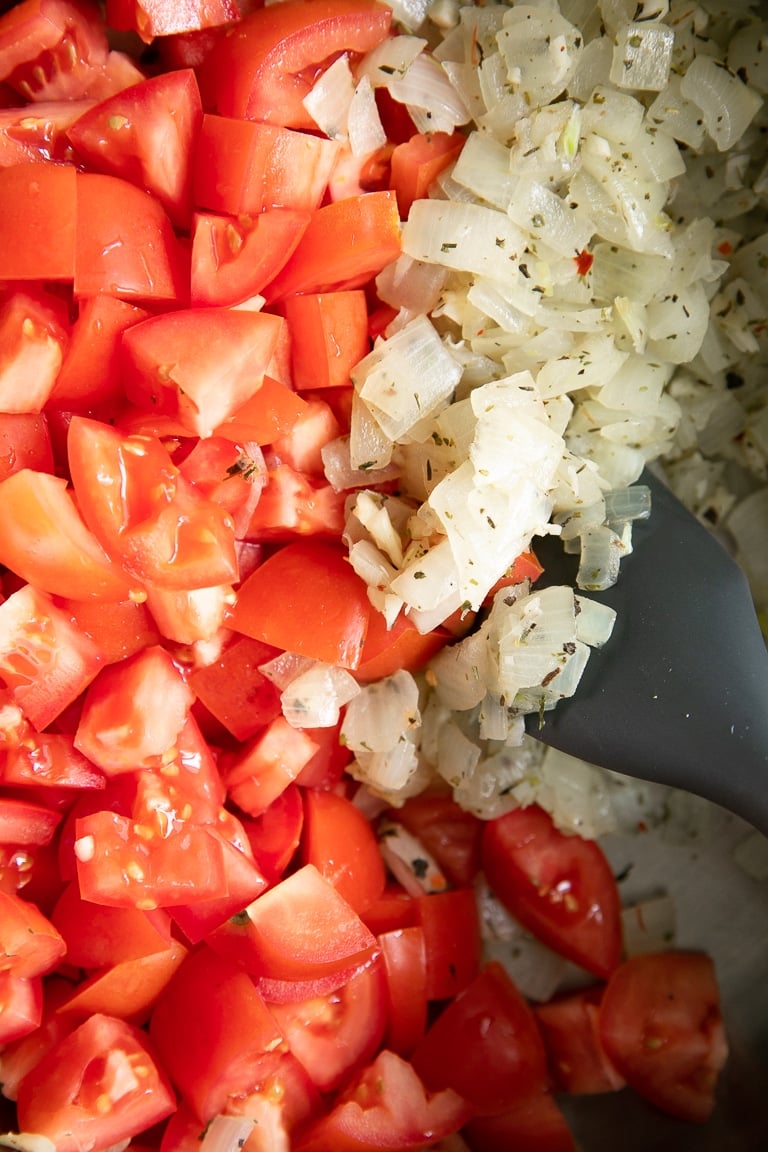
Ingredients
- Tomatoes: You may use fresh plum or Roma tomatoes, canned San Marzano tomatoes, or a mix of each. I used 8 Roma tomatoes and one (28-ounce) can of whole San Marzano tomatoes. Whole stewed tomatoes have the best flavor, especially when compared to chopped or diced canned tomatoes.
- Onion: I recommend using yellow onions as they have the mildest flavor.
- Fresh Garlic: If you love a super garlicky sauce, add a few more cloves, otherwise, start with 4-6 good size cloves.
- Dried Herbs: For a super clean, super fresh marinara sauce, skip the dried herbs. That said, a pinch of Italian seasoning or dried basil adds an extra layer of flavor without a whole lot of extra work (or special ingredients).
- Fresh Basil: Fresh basil, on the other hand, is a must (in my opinion). Unlike dried herbs, fresh basil helps keep the sauce tasting fresh and light. You don’t need a lot of basil, maybe 10 leaves total (unless you want more).
- Salt/Pepper/Sugar: Each of these is added to taste. In other words, some people may like a marinara sauce that is saltier, while others may prefer one that is sweeter. Keep in mind that you don’t want much of either of these ingredients. The sugar is there mostly to balance the acidity of the tomatoes, not to sweeten the sauce.
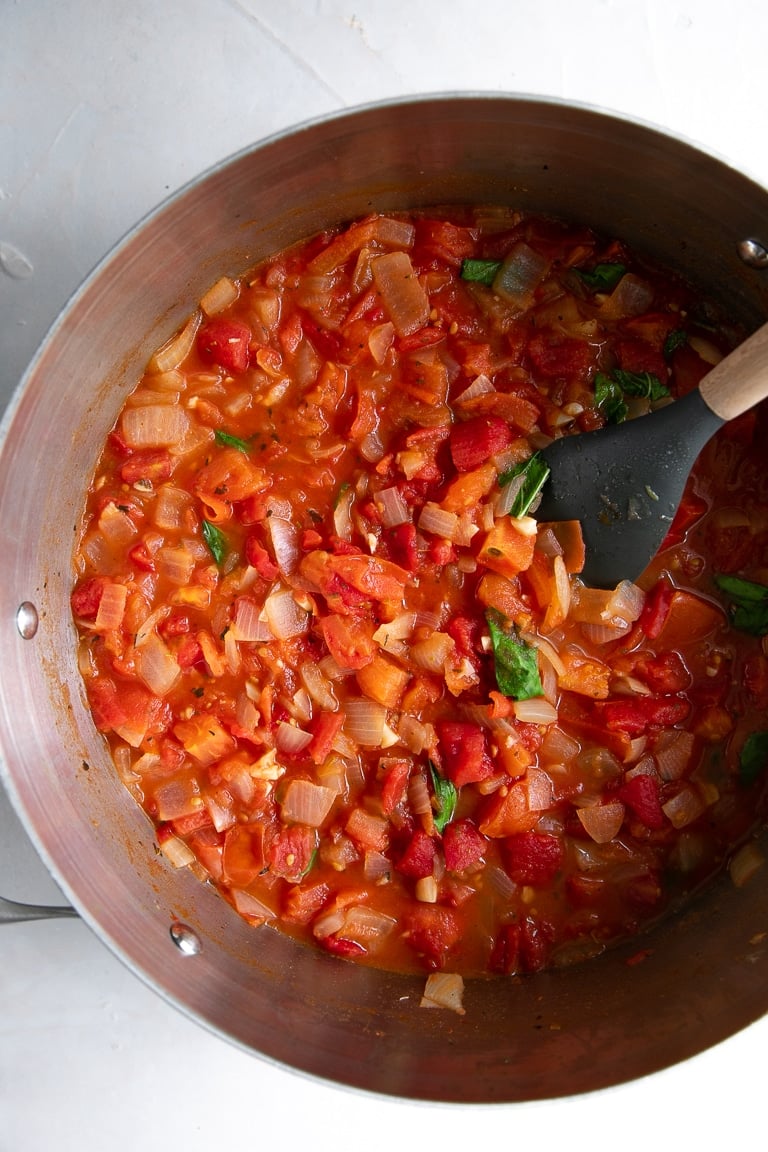
How to Make Marinara Sauce
Some methods call for blanching and peeling the tomatoes first, however, I find that it’s just as easy to roughly chop them, cook them until super soft, and then pulse/blend them in a blender or food processor until chunky (not soupy!).
1. Sauté the onions and garlic: Cook the onions in a little extra virgin olive oil until softened and translucent. Stir in the garlic, Italian seasoning, dried parsley, salt, and black pepper. Cook for an additional 30 seconds or so.
2. Add the tomatoes: Whether you’re using canned, fresh, or a mix of each, add them to the softened onions and mix well. Cover and simmer for approximately 15-20 minutes. In the last 5 minutes, stir in the sugar and fresh basil leaves.
3. Blend the mixture into a sauce: Work in batches, if necessary using a blender or immersion blender. Process until the desired consistency is reached. Careful not to overprocess.
4. Season to taste: Return the marinara sauce back to a large pot and continue to simmer, covered, over low heat until ready to serve. Season with additional salt and pepper, to taste.

Frequently Asked Questions
Stored in an air-tight container and in the refrigerator this homemade marinara sauce will last for up to 5-7 days.
Marinara sauce and pizza sauce are similar but different. In general, pizza sauce has a thicker consistency since the tomatoes have been completely pureed, rather than just blended. Marinara sauce can be used as a pizza sauce, however, it is usually used as a dipping sauce or over pasta.
You can thicken this marinara sauce by allowing it to simmer over low heat and uncovered until the desired consistency is reached. Or, stir in a couple of tablespoons of tomato paste.
Easy ways to add more flavor are with fresh herbs like basil, oregano, or rosemary. For a little heat, stir in a pinch or two of crushed red pepper flakes. And, if you are lucky enough to have a leftover parmesan cheese rind in your refrigerator, toss that in there as your sauce simmers (just remember to remove it before you blend everything together).
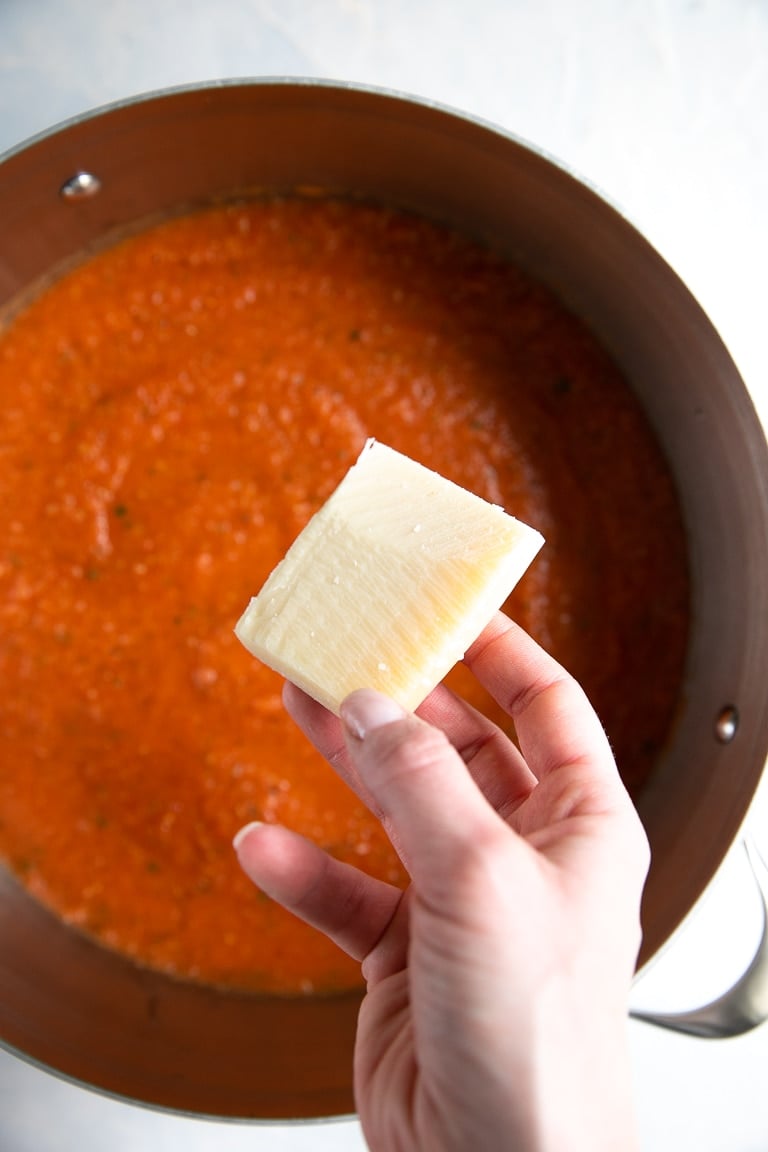
More Italian Recipes,
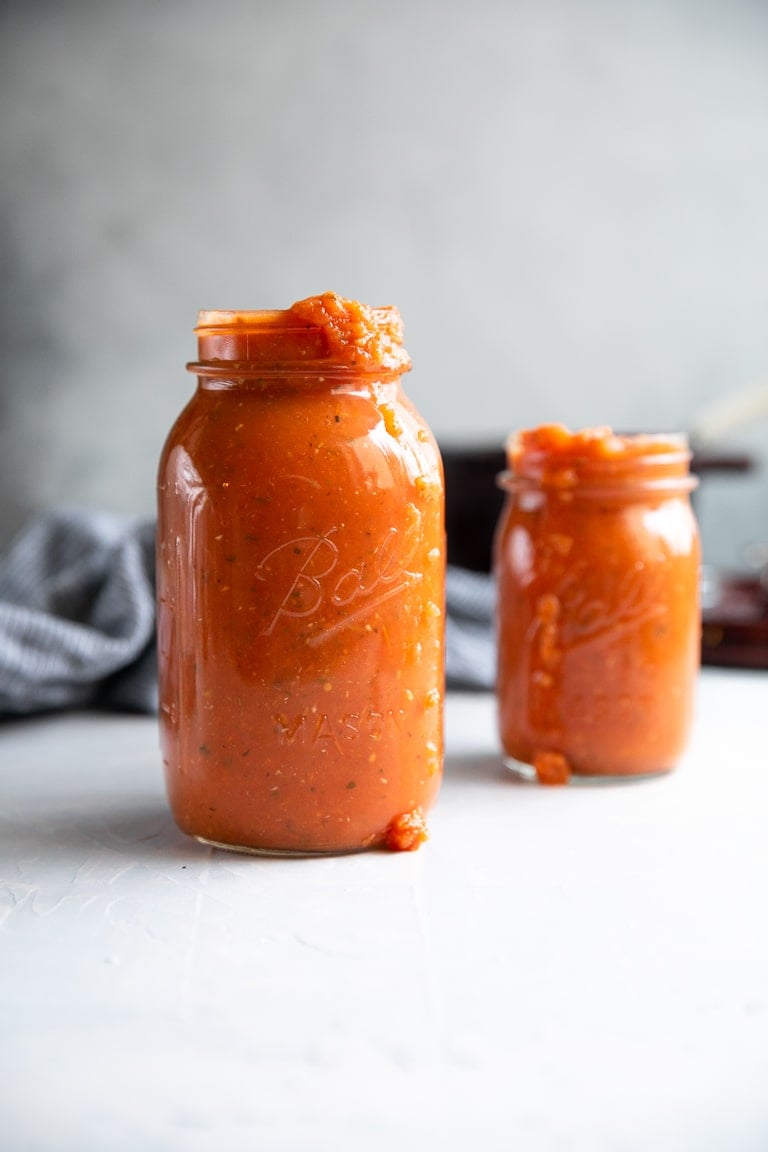
Have you tried this Homemade Marinara Sauce Recipe?
Tell me about it in the comments below! I always love to hear your thoughts. And tag me #theforkedspoon on Instagram if you’ve made any of my recipes, I always love to see what you’re cooking in the kitchen.

Marinara Sauce Recipe
Ingredients
- 2 tablespoon olive oil
- 2 medium onions, chopped
- 6 cloves garlic, minced
- 1 teaspoon Italian seasoning, plus more to taste
- 1 teaspoon dried parsley
- 1 teaspoon salt, plus more to taste
- ½ teaspoon freshly ground black pepper
- 8 Roma tomatoes, chopped
- 1 (28 ounce) can San Marzano tomatoes
- 1 ½ teaspoon granulated sugar
- 10 fresh basil leaves
Instructions
- Heat olive oil in a large pot over medium-high heat. Add the onions and stir well to coat in the olive oil. Cook until soft, approximately 5 minutes.
- Add the garlic, Italian seasoning, dried parsley, salt, and black pepper to the onions. Mix well and continue to cook for an additional 30-60 seconds.
- Add the fresh tomatoes and canned tomatoes (with juice) to the pot and mix well to combine. Cover and reduce heat to medium-low. Allow tomatoes to simmer for 10 minutes, stirring occasionally. Remove cover, stir in the sugar and fresh basil leaves, and continue to simmer for 5 minutes more.
- Working in batches, transfer tomato and onion mixture to a large, high-speed blender. Process until desired consistency is reached (careful not to over-process). Repeat until all the tomatoes and onions have been blended.
- Return sauce to the pot over low heat and season with additional salt and pepper, to taste.
Notes
- If you happen to have a leftover Parmesan cheese rind, toss it in the sauce as it simmers. Just be sure to remove it before you blend it together.
- Take care not to over-blend your sauce as you only want to process it until the sauce is uniformly chunky (not soupy).
- Leftovers: Keep leftover sauce stored in an airtight container in the refrigerator for up to 5-7 days.
- To Freeze: Transfer cooled sauce to freezer-safe bags or storage containers. Remove as much air as possible. Freeze for up to 3 months.
Nutrition
Nutrition information is automatically calculated, so should only be used as an approximation.














Simple and delicious! Possible sacrilege but I did add sausage as well.